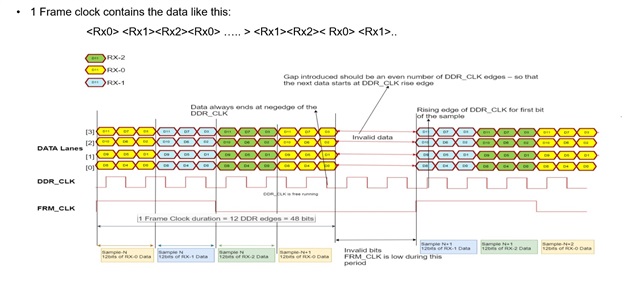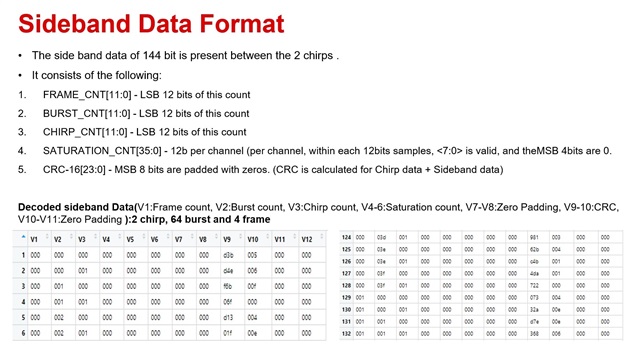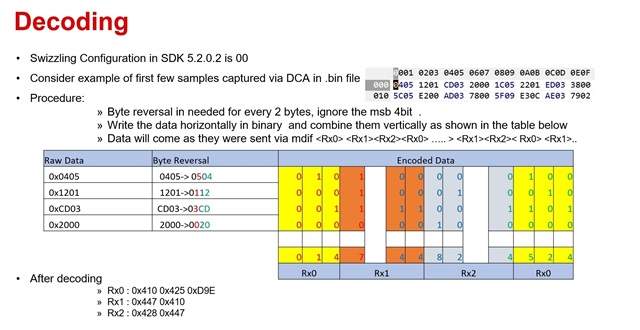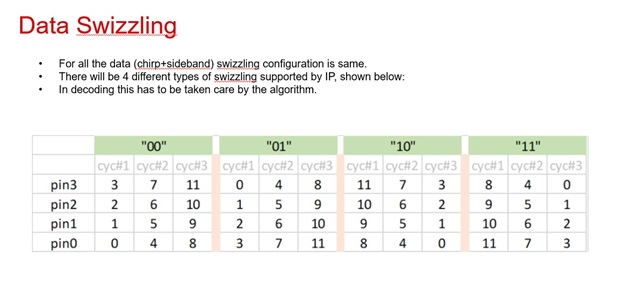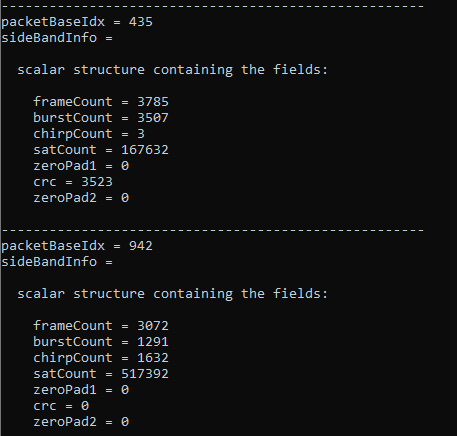Other Parts Discussed in Thread: MMWAVE-L-SDK
Hi,
I am trying to do some post-processing on raw ADC data captured using the DCA1000 without the use of mmwave studio, i.e. the data capture was done using the mmwave demo SW with SDK 5.02.00.02.
Previously, when we had done captures with the DCA and mmwave studio (with sideband data disabled) we were able to extract the relevant data from the raw capture without issue. Now, when enabling ADC logging in the mmwave demo SW, with sideband data enabled, which if I am not mistaken, appends 96 bits of data to the end of the chirp data. Am I correct in thinking that this would cause a syncing issue that would need to be accounted for in post-processing? (in addition to the usual syncing issue that could occur due to not using mmwave studio i.e. the radar begins transmission before the DCA begins capturing)
In a previous forum post here: https://e2e.ti.com/support/sensors-group/sensors/f/sensors-forum/1232378/iwrl6432boost-enabling-data-streaming-via-ldvs-in-software, it was mentioned that the sideband data can help to sync the ADC data. In this case how should we go about using the sideband data to do this? Do you have any existing tools that can help us to sync and read in raw ADC data with sideband info enabled?
Best Regards,
Yohennas Folly



